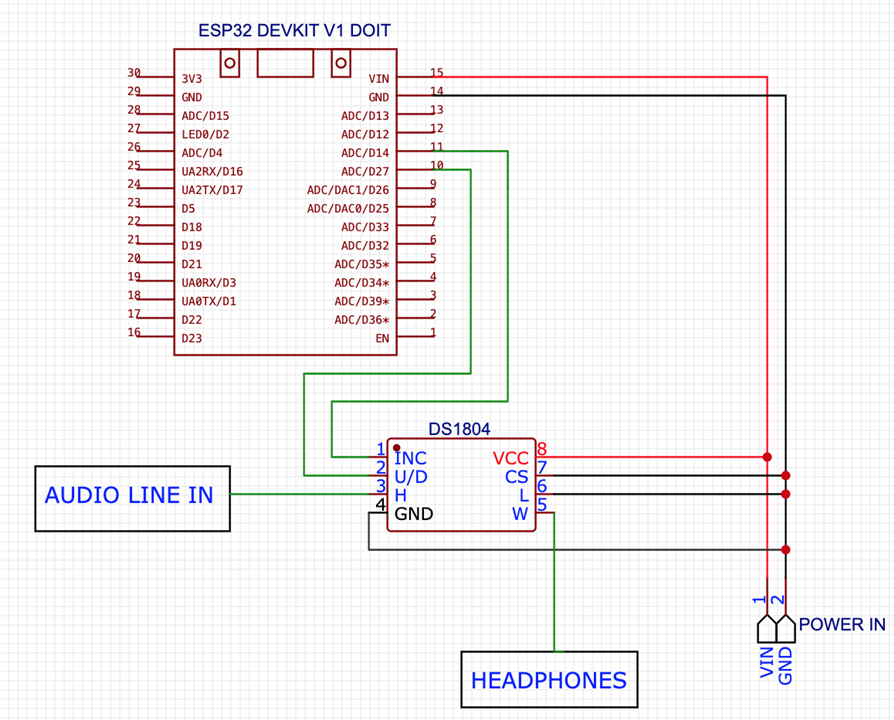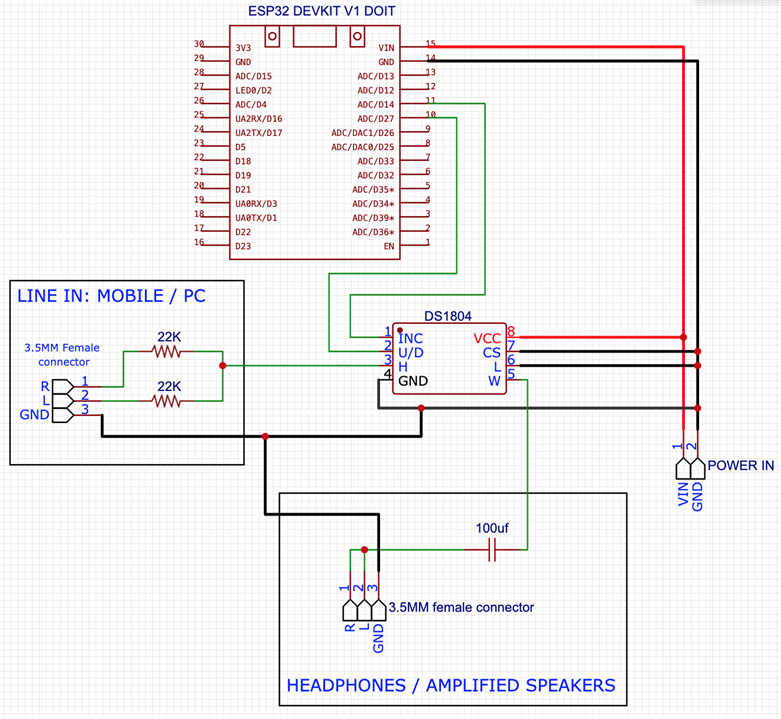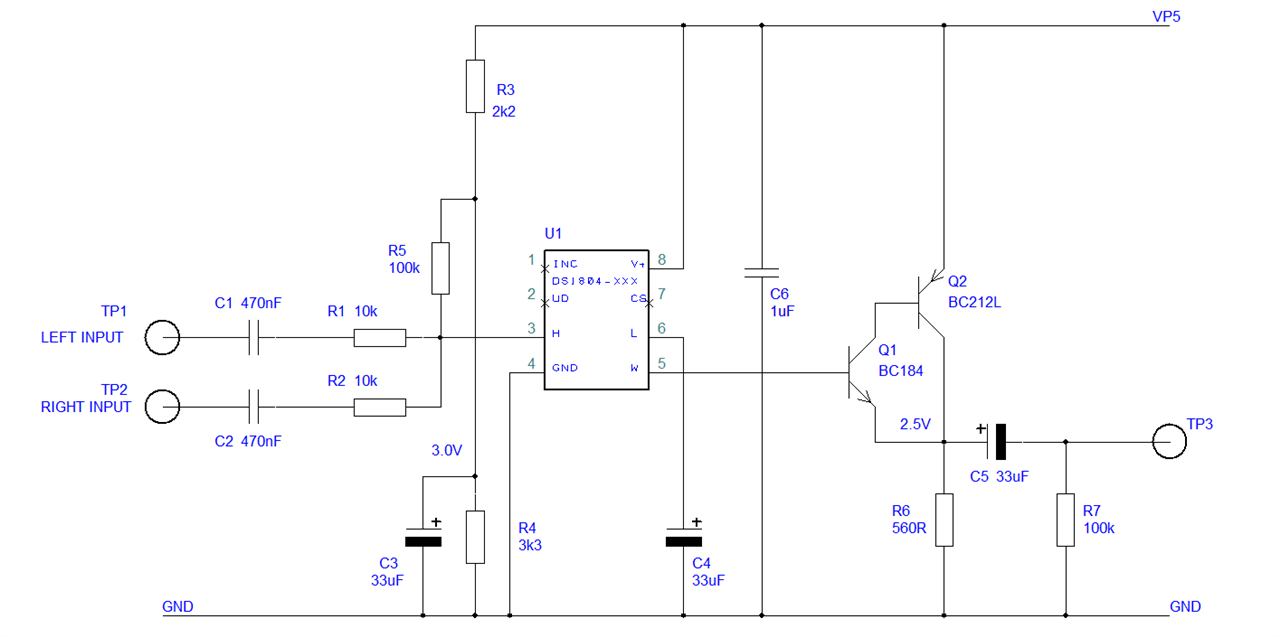Hello people!
The volume goes up and down correctly. The lower the volume, the more noise it produces.
DS1804 has 100 positions:
In positions [80,99] it does not produce noise (I do not hear it)
[70-80) -> produces a little noise
[60-70) -> more noise
[50-60) -> even more noise
...
[10-20) -> a lot of distortion
The component is original purchased from "Mouser Electronic".
Component Detail anda Data Sheet
I use a constant 5v power supply, I don't use USB-C
I have 2 units of DS1804, they both do the same thing.
<code>
</code>

Any ideas? Thank you


